Introduction to bromeliad care: Tips from Paul Wingert
Text and photos by Sandie Parrott
Water. They must never dry out; too dry is worse than too wet. For types with overlapping leaf bases, keep the vase area full of water. Overflow a bit for the roots. Large plants can hold several gallons of water. For terrestrial types without a vase area: keep them evenly moist; they can tolerate some dryness.
Air. Air plants (Tillandsia) are named after a botanist that was afraid of water. Mist every couple of days or dunk and soak one hour, every other week. Air plants need good air circulation—use a fan indoors in the winter and hang them outside during the summer. If elevated, you don’t have to deal with sow bugs or other ground pests.
Light. In summer, bromeliads will do well where hosta plants grow well. Wingert also uses 40 percent shade cloth on his shade house. For winter, they need all the light they can get: a south, west, or east window, or better yet, a greenhouse.
Soil. For vase plants, Wingert makes his own mix of 1/3 perlite and lava rock, 1/3 cypress mulch and aged pine bark (fine), and 1/3 peat moss. For terrestrials like Cryptanthus, Dyckia, and Orthophytum, he uses a professional soilless mix.
Pots. Wingert uses plastic. They are lightweight and fit the pot rings in his shade house. Most bromeliads like to be pot-bound.
Fertilizer. This is a constant source of debate. Some experts do not fertilize. It is believed by some that if you want more flowers and don’t care about the foliage, it is alright to fertilize. If you decide to fertilize, use water soluble fertilizer added to water. Place some in the innermost cup of the plant and a little on the soil. Bromeliads cannot handle urea or copper; make sure fertilizer does not contain either one. Air plants (Tillandsia) need high nitrogen. Guzmanias, billbergias and vriesias prefer an orchid-type fertilizer; they will bloom much better. Neoregelias need a low nitrogen fertilizer, like a cactus fertilizer.
Pests. Not a lot of pest problems exist for bromeliads. Scale will create spotting but won’t kill the plant. Use insecticidal soap and scrub lightly. Rub them off if dead. Reapply the soap in two weeks if the infestation is bad. Mealy bug may appear on flower spikes, but it shouldn’t be a concern. Watch for chipmunks planting or spreading seeds in pots.
Foliage maintenance. It is natural for the lower leaves to brown and dry; just remove them. You can carefully trim brown tips with scissors.
Propagation. Plants form pups or offshoots after they bloom. Remove them when they are 1/3 to 1/2 the size of the mother plant. Sever as close to the mother plant as possible and plant separately.
Seeds and plants. Seeds can be collected from plants or purchased. Most serious growers use their own seed or obtain seeds at seed exchanges from other growers. The Bromeliad Society International has a list of companies selling plants and seeds; visit www.bsi.org.
To learn more or attend a Southeast Michigan Bromeliad Society event, visit their website: www.bromeliad.society.gardenwebs.net/.
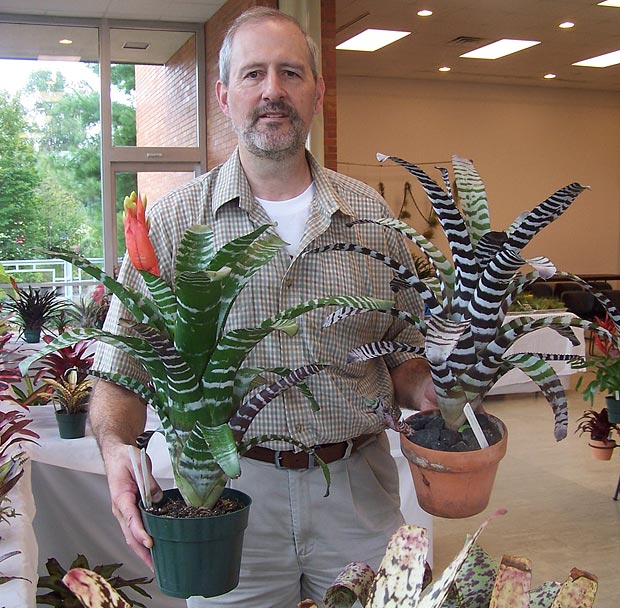
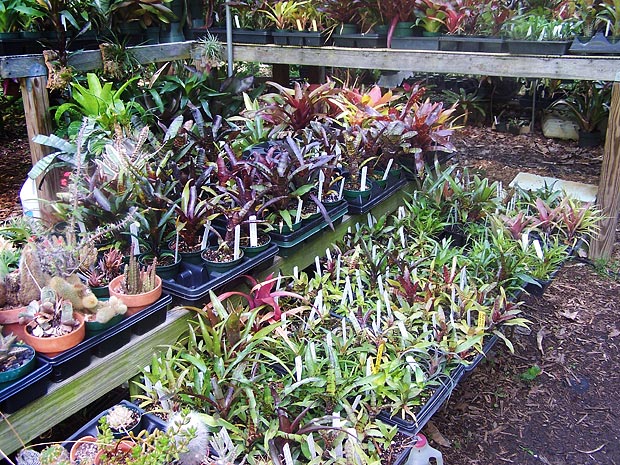
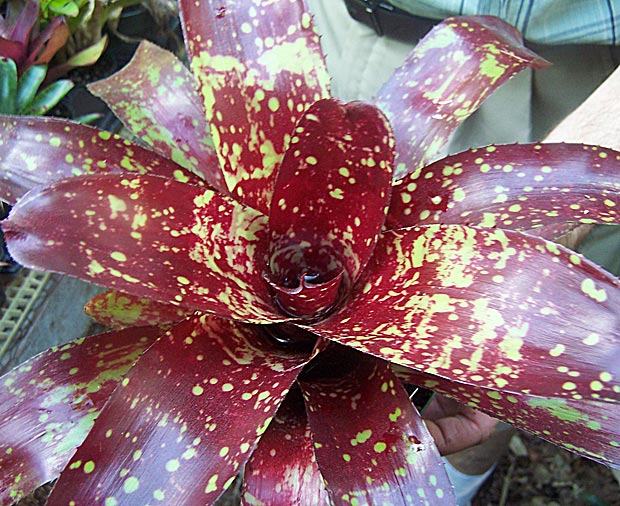
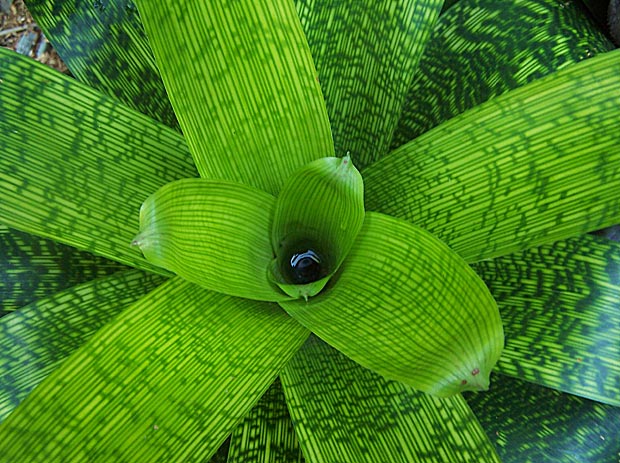
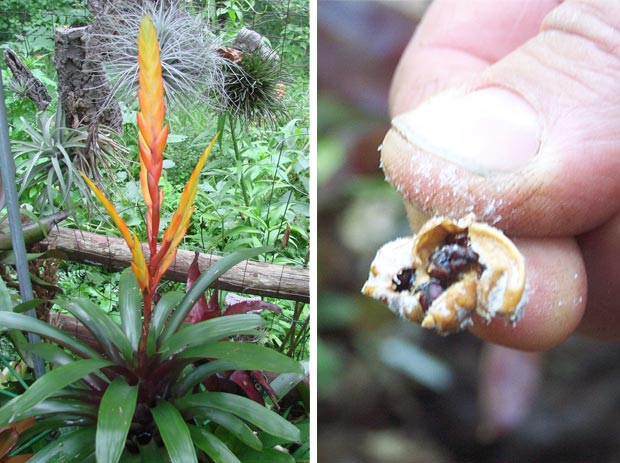

Brenda Pangborn says
Hi, Paul–We read about you in the Michigan Gardener magazine. We knew you grew Broms but, WOW, you REALLY grow them. Perhaps Bob will get in touch with you one of these days and purchase one from you. I do need to know if they are poisonous for dogs–not that ours would even want to taste on, but . . . one never knows.
jhofley says
Brenda-
Thanks for reading Michigan Gardener. I’m not sure Paul will be reading the article online or the comments so be sure to contact Paul if you want to communicate directly with him.
-Jonathon, Michigan Gardener
Paul Wingert says
Brenda,
Thanks for your kind words!
You are not the first to ask about the possibility of toxins in bromeliads. To the best of my knowledge, there are no known toxins in any bromeliads. Consider that the pineapple has tasty fruit, and many other bromeliads produce berries, though many of them are rather seedy and not all are quite as tasty as the pineapple! Some species in the genus Bromelia produce large berries that are used by native populations to produce a juice which is similar to pineapple juice or lemonade.
As proof that bromeliads are not poisonous, many years ago, my parents had a new puppy in the house that decided that one of my bromeliads was a very satisfying teething toy. The plant was totally destroyed, but the dog suffered no ill effects from shredding the plant!
The current drought is beginning to stress our local wildlife. Some of the critters are beginning to find that the bromeliads in the yard are reservoirs of water. Of course, they don’t just lap up the water from the cup. Rather, they chew through the leaves until the water seeps out. It’s only a couple of plants so far, and nothing from which the plants shouldn’t be able to recover. The last time this happened was the drought of 1988. A good soaking rain should alleviate the problem!
Paul Wingert
jhofley says
Paul-
Thanks for weighing in on this!
-Jonathon, Michigan Gardener
Garden Splendor LLC says
Visit the Aristocrats of the Rainforest: Bromeliads, Orchids, Tillandsias and many more grown in Rochester Hills, MI.